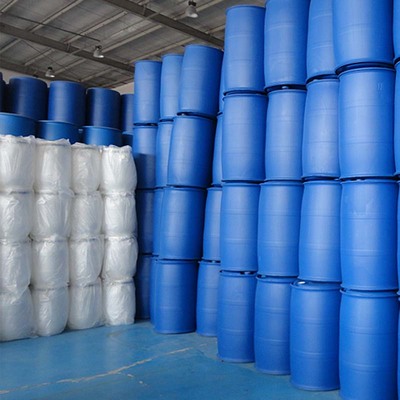What Is Formic Acid Reactive To?
Chemical Composition and Physical Properties
At its core, formic acid is a small, simple molecule composed of a single carbon atom bonded to a hydroxyl group (-OH) and a carbonyl group (C=O). This structure (chemical formula: HCOOH) defines its role as the simplest of the carboxylic acids.
Formic acid has unique physical properties that contribute to its reactivity:
- Boiling Point: Approximately 100.8°C (213.4°F), slightly above water.
- Melting Point: 8.4°C (47.1°F), making it a liquid under standard conditions.
- Acidity Level: With a pKa of 3.75, it is stronger than acetic acid, giving it potent acidic properties.
What does this mean practically? Formic acid is highly reactive and easily dissociates in aqueous solutions, influencing its interactions with other chemicals and substances.
Industrially, these properties contribute to its broad utility. It plays a significant role in applications like leather tanning, dyeing, and as a critical agent in agriculture. You can learn more about its industrial uses from sources like ScienceDirect.

Where Formic Acid Occurs Naturally
Nature is no stranger to formic acid. In fact, its name is derived feom the Latin word “formica,” meaning “ant,” because of its prominent presence in ant venom. Many ant species use formic acid as a chemical defense mechanism, spraying it to ward off threats.
Here are some natural occurrences of formic acid:
- Insects: Apart from ants, it’s present in other stinging insects like bees and wasps.
- Plants and Fruits: Certain plants produce formic acid as part of their natural processes. It can also be found in small amounts in fruits like apples.
- Environment: Formic acid has been identified as a component in atmospheric chemistry, with researchers noting its unexpected sources over oceans. Check out further details on this from Sandia National Laboratories.
By understanding these natural sources, it’s clear that formic acid is integral not just to small creatures but also to broader ecosystems. Interestingly, it’s even used by some plants as a natural byproduct of metabolism, as noted by Monarch Chemicals.
This dual existence—both in nature and in industrial applications—is a testament to just how significant formic acid is in our world.
Reactivity of Formic Acid with Common Substances
Formic acid holds an intriguing place in the world of chemistry due to its vigorous and readily observable reactions with a wide variety of substances. Whether it’s reacting with bases, oxidizing agents, or metals, its behavior provides valuable insights into chemical processes. The following explores key reactivities that define formic acid’s unique versatility.
Reaction with Bases and Alkalis
When formic acid reacts with bases—both organic and inorganic—the reaction is highly exothermic. This intense heat generation makes it essential to approach such reactions with caution
For example:
- With inorganic bases like sodium hydroxide (NaOH): Formic acid reacts to form sodium formate (HCOONa) and water.
- With organic bases such as amines: The products vary but can include salts and water.
The heat released during these base-acid neutralization reactions can make them valuable in industrial applications where thermal energy is utilized. Learn more about formic acid’s reaction profiles on CAMEO Chemicals.
Interaction with Oxidizing Agents
Formic acid’s interaction with oxidizing agents stands out due to its ability to act as both a reductant and, in rarer cases, an oxidant. High-energy reactions often occur when formic acid comes into contact with agents like potassium permanganate (KMnO₄) or chlorates.
- With potassium permanganate: Formic acid is oxidized into carbon dioxide (CO₂), while potassium permanganate is reduced. The reaction is strongly exothermic and can rapidly escalate in uncontrolled environments.
- With chlorates or nitrates: Similar oxidation-reduction reactions occur, yielding salts and gases.
For safe handling in industrial settings, understanding these reactions’ rapid escalation potential is critical. Explore more about its reactions with oxidants from its comprehensive profile on PubChem.
Reactivity with Metals
Formic acid exhibits straightforward reactions with several metals, a process notable for generating hydrogen gas. Specifically, metals such as magnesium, zinc, and iron are reactive.
Here’s what typically happens:
- The metal reacts with formic acid, producing hydrogen gas (H₂).
- A corresponding metallic salt forms as a byproduct (e.g., zinc formate)
This reaction illustrates the acid’s reducing properties and makes formic acid useful in hydrogen production. However, as hydrogen is flammable, any such reactions should be performed under controlled conditions. Find a detailed exploration of its metal reactivity on the New Jersey Hazardous Substance Fact Sheet.
Behavior Under Heat and Catalysts
Formic acid’s reactions are significantly influenced by heat and the presence of catalysts. Under thermal conditions or with a suitable catalyst, the molecule decomposes in ways that reveal its dual functionality as an acid and reducing agent.
- Thermal decomposition: Heating formic acid leads to its breakdown into water and carbon monoxide (CO). The reaction is endothermic and commonly used in hydrogen production facilities.
- Catalytic decomposition: In the presence of metal catalysts like palladium or platinum, formic acid decomposes into carbon dioxide (CO₂) and hydrogen gas (H₂).
This decomposition finds practical applications in fuel cells and other energy systems. For more details on formic acid’s decomposition behavior, visit the ACS website.
Each of these interactions showcases formic acid’s dynamic reactivity, highlighting its importance across multiple scientific and industrial domains. Whether neutralizing a base, reducing an oxidant, or decomposing into simpler products, formic acid remains a highly potent and versatile chemical.
Conclusion
To further explore its reactions and applications, consider reviewing its detailed profile on formic acid reactions. Exploring its characteristics equips industries and researchers to harness its full potential safely.






